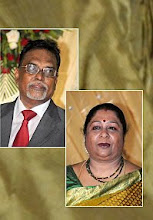1639- CASTE SYSTEM IN INDIA (I)
(1)Beginning of the rigid caste system
A new genetic study, carried out by Harvard Medical School and the CSIR-Centre for Cellular and Molecular Biology (CCMB) in Hyderabad, says that India's caste system, began about 2,000 years ago. The study adds that people from different genetic populations — from the North and the South — began to mix with each other about 4,200 years ago but that the mixing stopped about 2,000 years ago.
(2)Fluidity in the system
When the caste system had started, it was based on the duties one used to perform or on merits and no watertight compartments of castes. There was dignity of labour and no hereditary system of castes. In its later stages, the caste system is said to have become rigid, and caste began to be inherited rather than acquired by merit.
(3)The Beginning of the caste system
There are different theories about the establishment of the caste system. There are religious-mystical theories. There are biological theories. And there are socio-historical theories.
(3A)The religious theories
explain how the four Varnas were founded, but they do not explain how the Jatis in each Varna or the untouchables were founded. According the Rig Veda, the ancient Hindu book, the primal man - Purush - destroyed himself to create a human society. The different Varnas were created from different parts of his body. The Brahmans were created from his head; the Kshatrias from his hands; the Vaishias from his thighs and the Sudras from his feet. The Varna hierarchy is determined by the descending order of the different organs from which the Varnas were created.
(3B)The biological theory
claims that all existing things, animated and inanimated, inherent three qualities in different apportionment. Sattva qualities include wisdom, intelligence, honesty, goodness and other positive qualities. Rajas include qualities like passion, pride, valour and other passionate qualities. Tamas qualities include dullness, stupidity, lack of creativity and other negative qualities. People with different doses of these inherent qualities adopted different types of occupation.According to this theory the Brahmans inherent Sattva qualities. Kshatrias and Vaisias inherent Rajas qualities. And the Sudras inherent Tamas qualities.
(3C)The social historical theory
explains the creation of the Varnas, Jatis and of the untouchables. According to this theory, the caste system began with the arrival of the Aryans in India. The Aryans arrived in India around 1500 BC. The fair skinned Aryans arrived in India from south Europe and north Asia. Before the Aryans there were other communities in India of other origins. Among them Negrito, Mongoloid, Austroloid and Dravidian. The Negrito have physical features similar to people of Africa. The Mongoloid have Chinese features. The Austroloids have features similar the aboriginals of Australia. The Dravidians originate from the Mediterranean and they were the largest community in India. When the Aryans arrived in India their main contact was with the Dravidians and the Austroloids. The Aryans disregarded the local cultures. They began conquering and taking control over regions in north India and at the same time pushed the local people southwards or towards the jungles and mountains in north India.
The Aryans organized among themselves in three groups. The first group was of the warriors and they were called Rajayana, later they changed their name Rajayana to Kshatria. The second group was of the priests and they were called Brahmans. These two groups struggled politically for leadership among the Aryans. In this struggle the Brahmans got to be the leaders of the Aryan society. The third group was of the farmers and craftsmen and they were called Vaisia. The Aryans who conquered and took control over parts of north India subdued the locals and made them their servants. In this process the Vaisias who were the farmers and the craftsmen became the landlords and the businessmen of the society and the locals became the peasants and the craftsmen of the society. (This sort of thing we can see in small banks merging into big banks. When Bank of Tanjore was merged with our Indian bank, I saw their RMs reduced to writing scroll.)
The skin color was an important factor in the caste system. The meaning of the word "Varna" is not class or status but skin color.
Most of the communities that were in India before the arrival of the Aryans were integrated in the Sudra Varna or were made outcast depending on the professions of these communities. Communities who professed non-polluting jobs were integrated in Sudra Varna. And communities who professed polluting professions were made outcasts. The Brahmans are very strict about cleanliness. In the past people believed that diseases can also spread also through air and not only through physical touch. Perhaps because of this reason the untouchables were not only disallowed to touch the high caste communities but they also had to stand at a certain distance from the high castes.
(4)When decay sets in and atrocities are perpetrated on account of the system, then a reformer like Gautama Buddha appears. It happens in many a religions, even in Christianity, like Martin Luther.
(5)Satyakama Jabala's story
appears in Chapter IV of the Chandogya Upanishad whose story proves the fluidity of the caste system in earlier days. Wanting to go out in search of a teacher who would guide him in the path of Self-realisation, the goal of mystic life, he had enquired about his Gotra from his mother.
His mother, Jabala, who did not know about who his father was, told him to be truthful to his teacher about his own parentage. Indeed, Truth is the supreme virtue, the moral virtue that enables one to reach the Absolute (Chandogya Upanishad IV 4.1-5.)
Rishi Gautama Haridrumata convinced that only a Brahmin could be sincere, truthful, fearless and eager for knowledge agreed to instruct Satyakama – since HE SPOKE THE TRUTH HE WAS A BRAHMIN!


0 Comments:
Post a Comment
<< Home